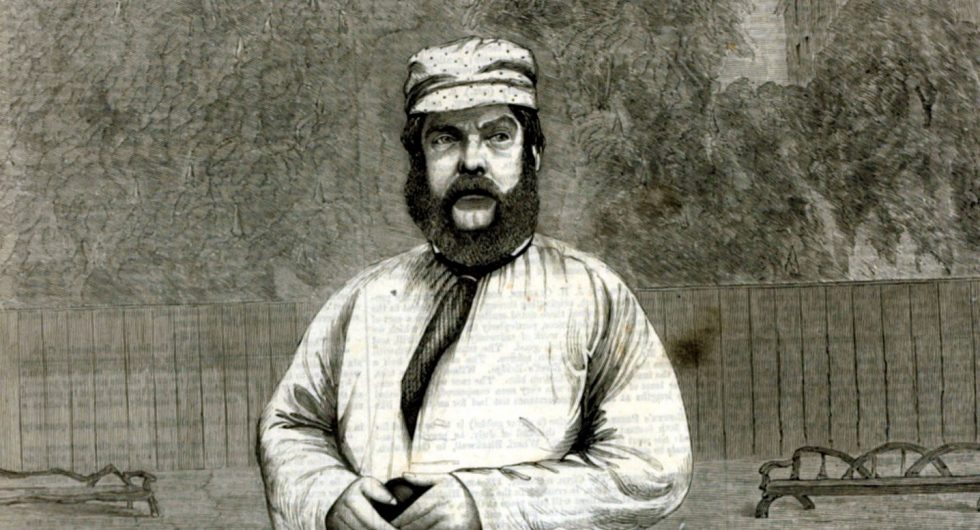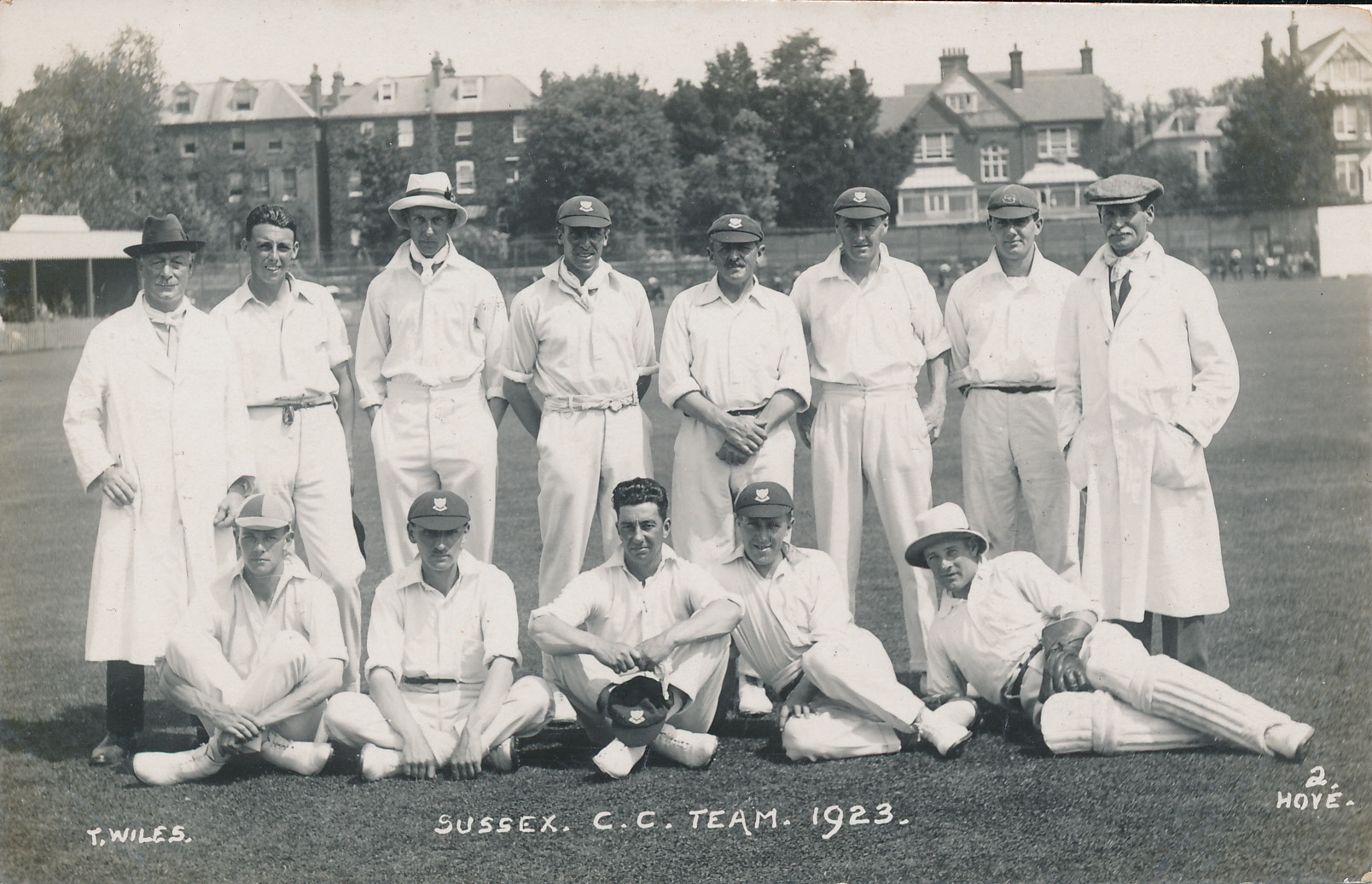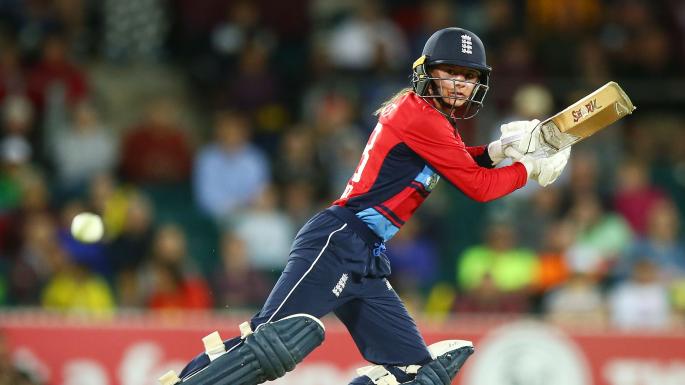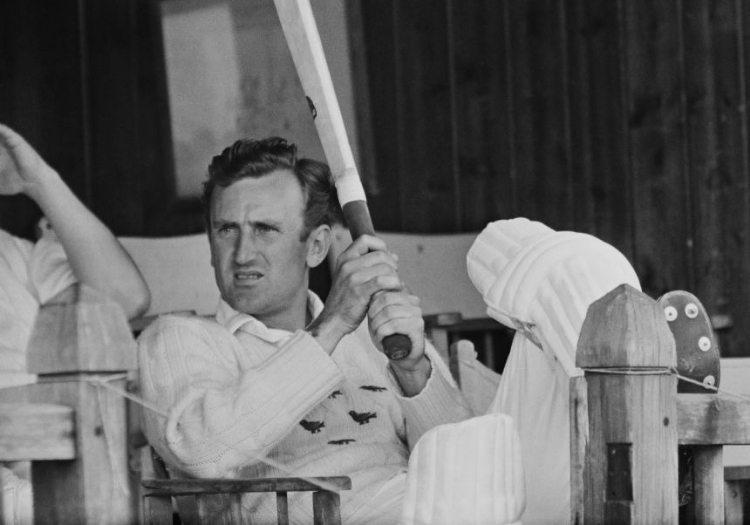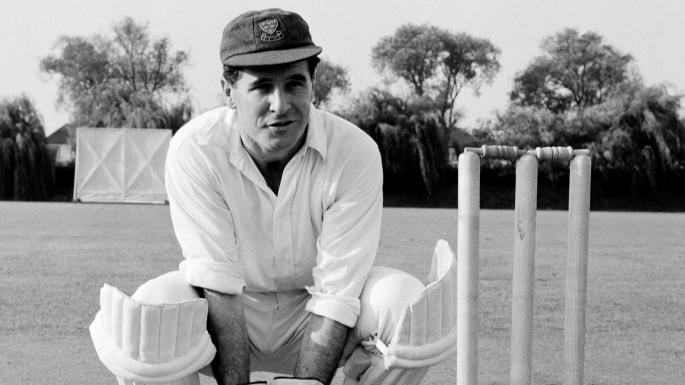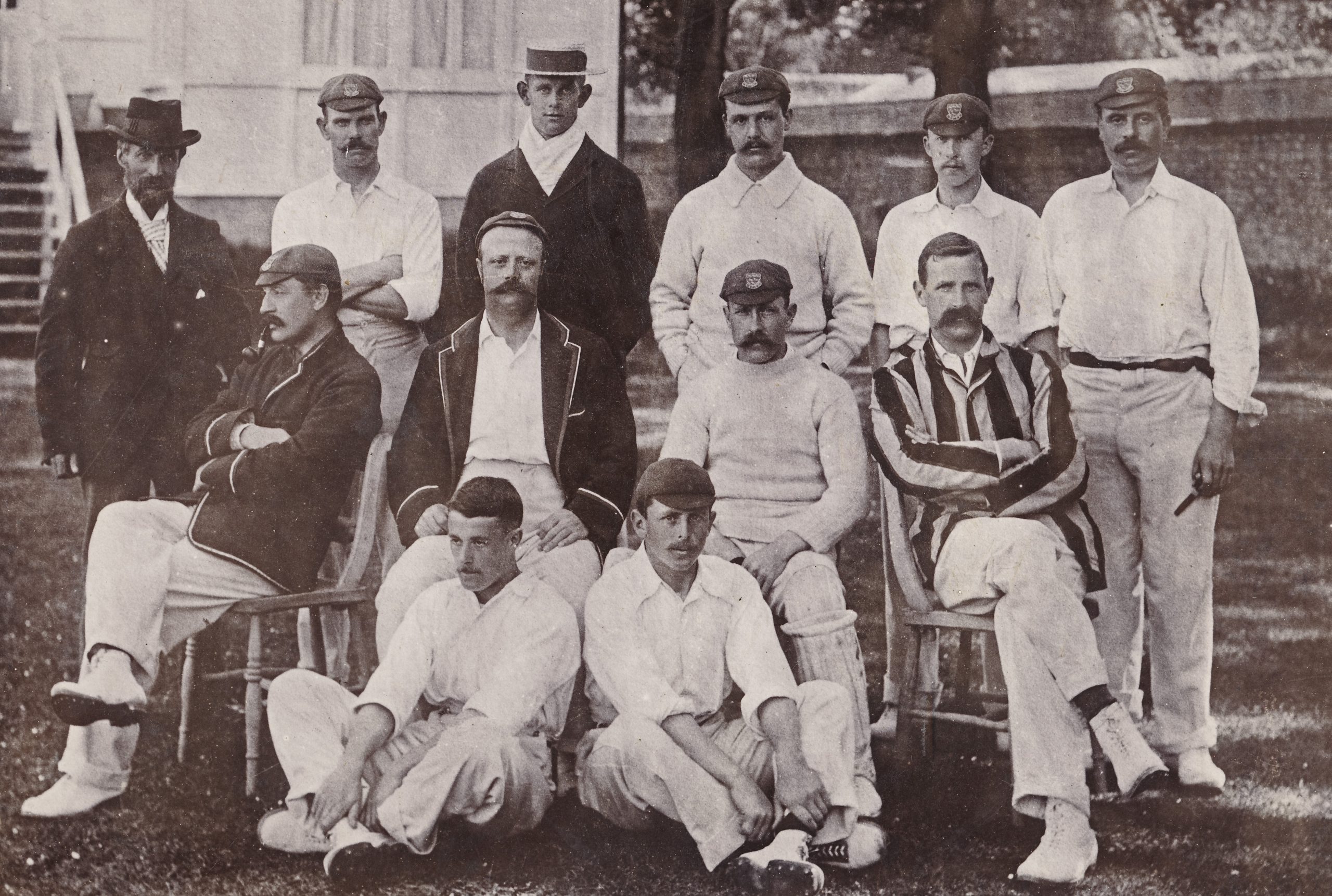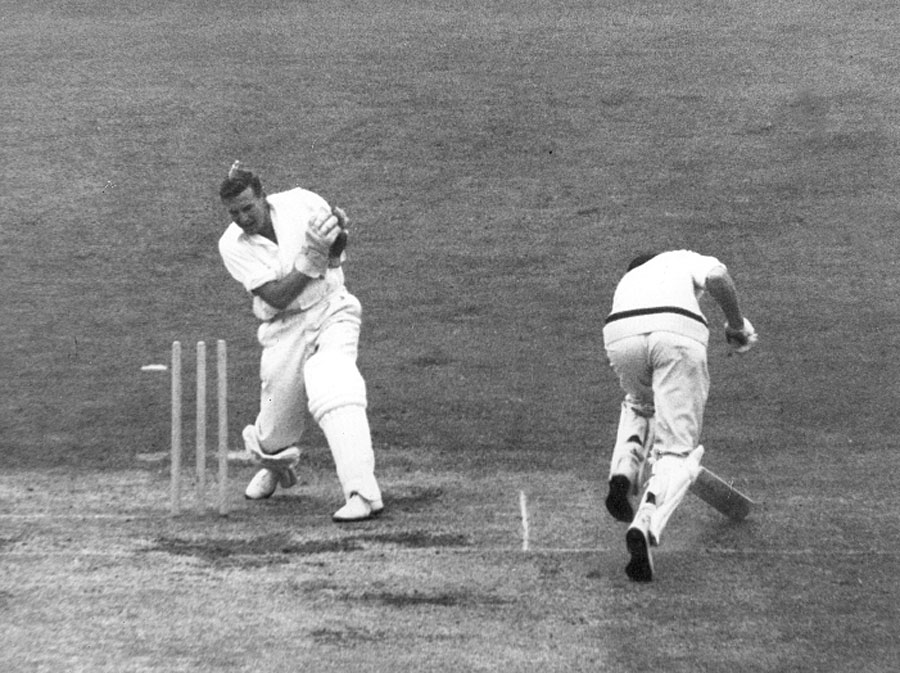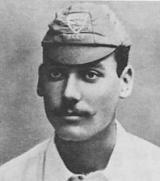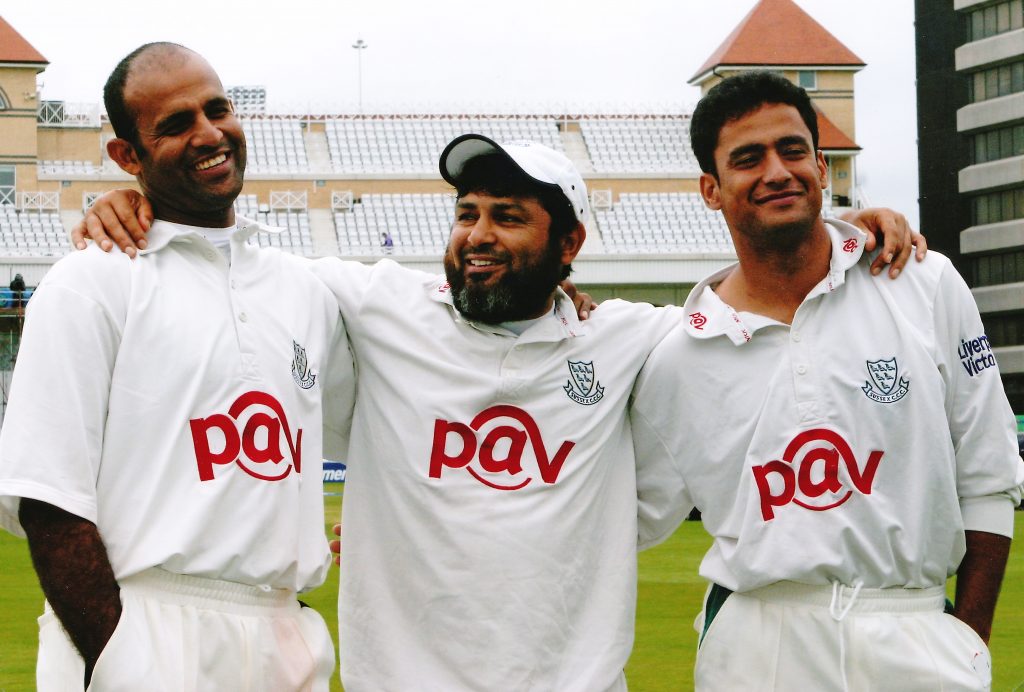This section of the website provides short biographies of some of the great players who have represented Sussex over the years. It is very much in an embryonic stage and we are adding pages all the time. Click on to a name to be taken to that player’s profile.
John Barclay
John Barclay was born in 22 January 1954 in Bonn, but his parents moved back to Britain when he was two. The family lived close to the cricket ground in Horsham, and this helped to kindle a love of cricket at an early age. He attended Eton College, excelling at cricket by getting into the 1st XI at the age of fifteen as an all-rounder. He made his debut for Sussex at the age of sixteen, in 1970, whilst still at school, playing two matches for the county, and in that season scored a total of 897 runs for the school, a record, and also took 28 wickets. Read On
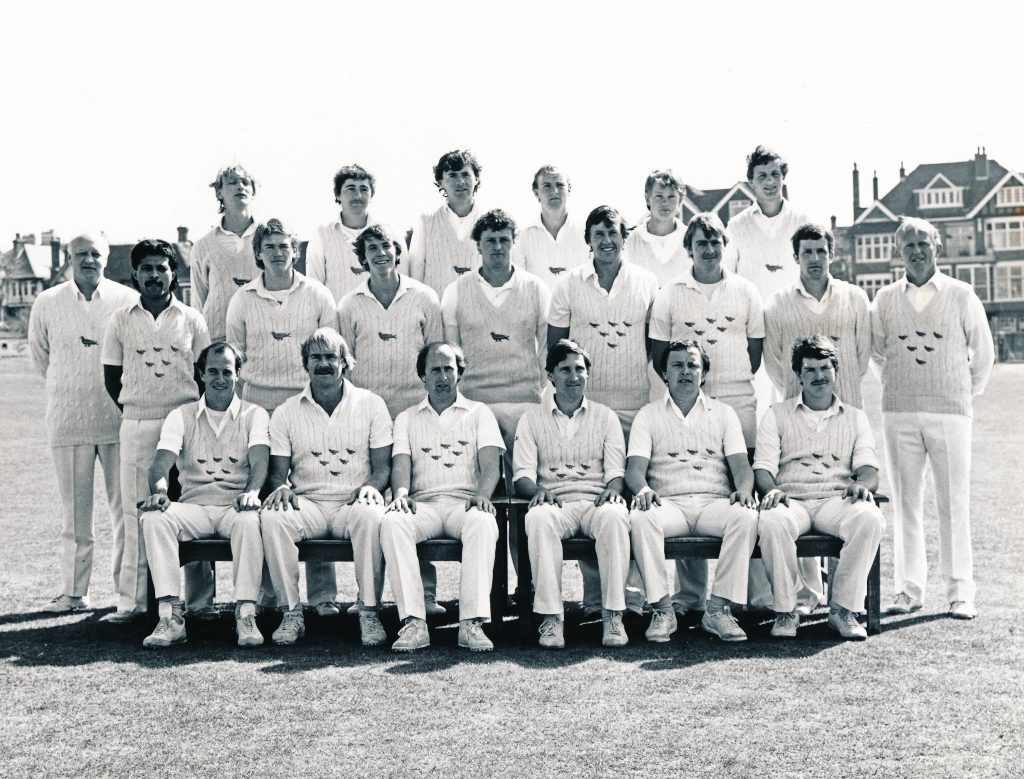
Ted Bowley
Ted Bowley ranks amongst the greatest of Sussex’s professional batsmen, alongside the likes of Joe Vine and John Langridge. He was the mainstay of Sussex batting in the 1920s when the team’s batting was generally quite unreliable. He was by technique and inclination an ideal number four batsman, but the demands of the team meant that he is better known as an opener. Read On
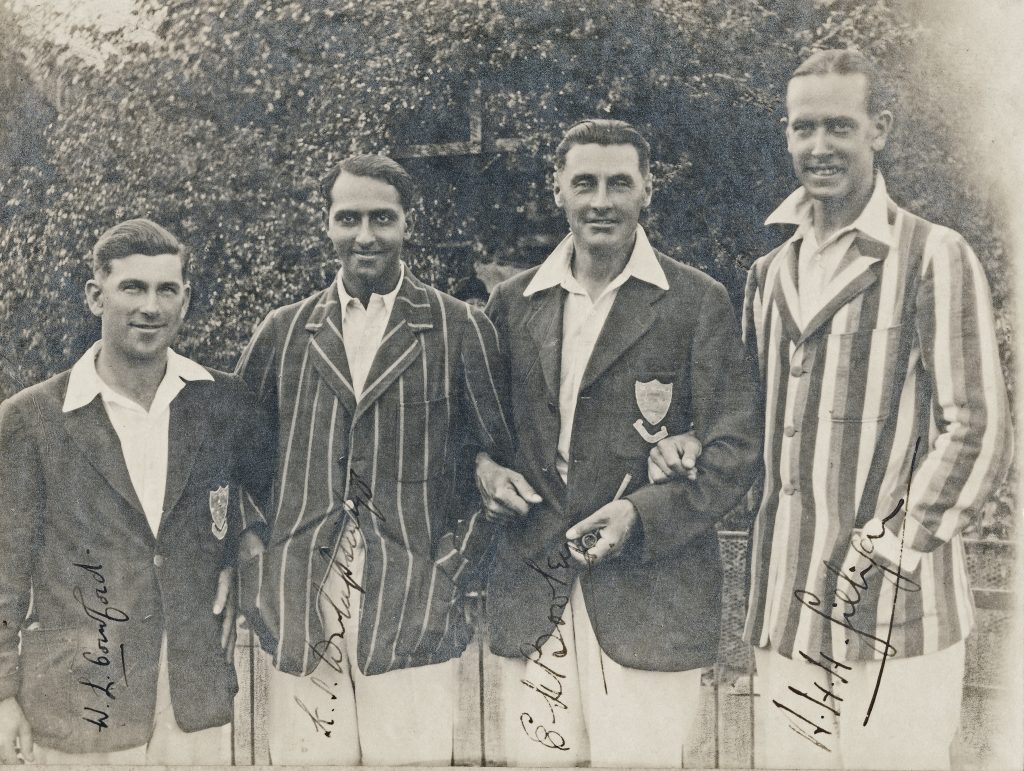
Tom Box
Tom Box played much of his cricket before the advent of the county side in 1839. He made his debut in 1826, the first new player for five years, and played for 31 years and did not miss a match in 24 of these years. Read On
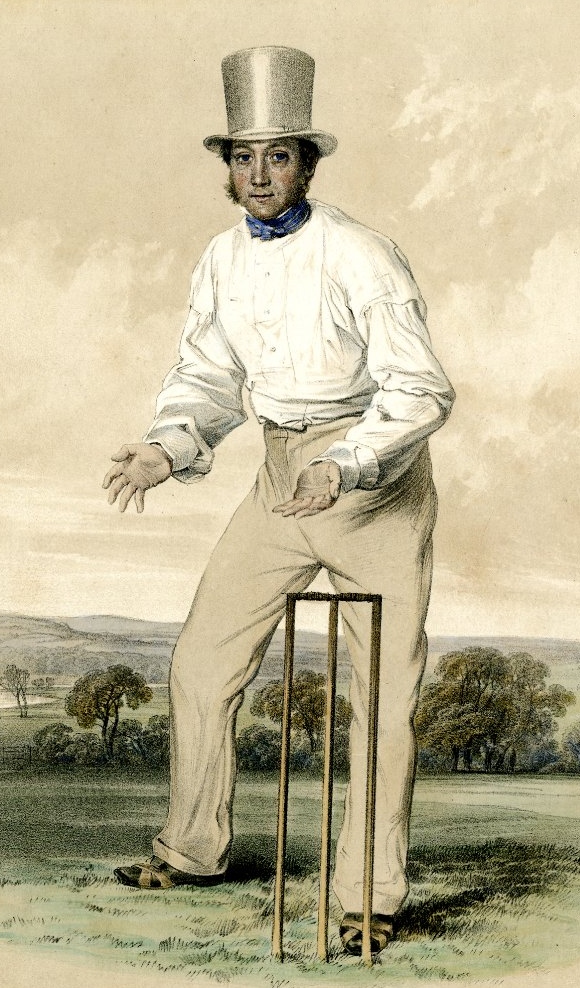
Tommy Cook
Tommy Cook was born at 30 South Street, Cuckfield on 5 February 1901, where his parents Alfred and Eliza ran a sweet shop. He showed early promise as a footballer and was only 12 when he started playing for Cuckfield Football Club. He excelled in several areas of his life but ultimately his life ended in tragedy.
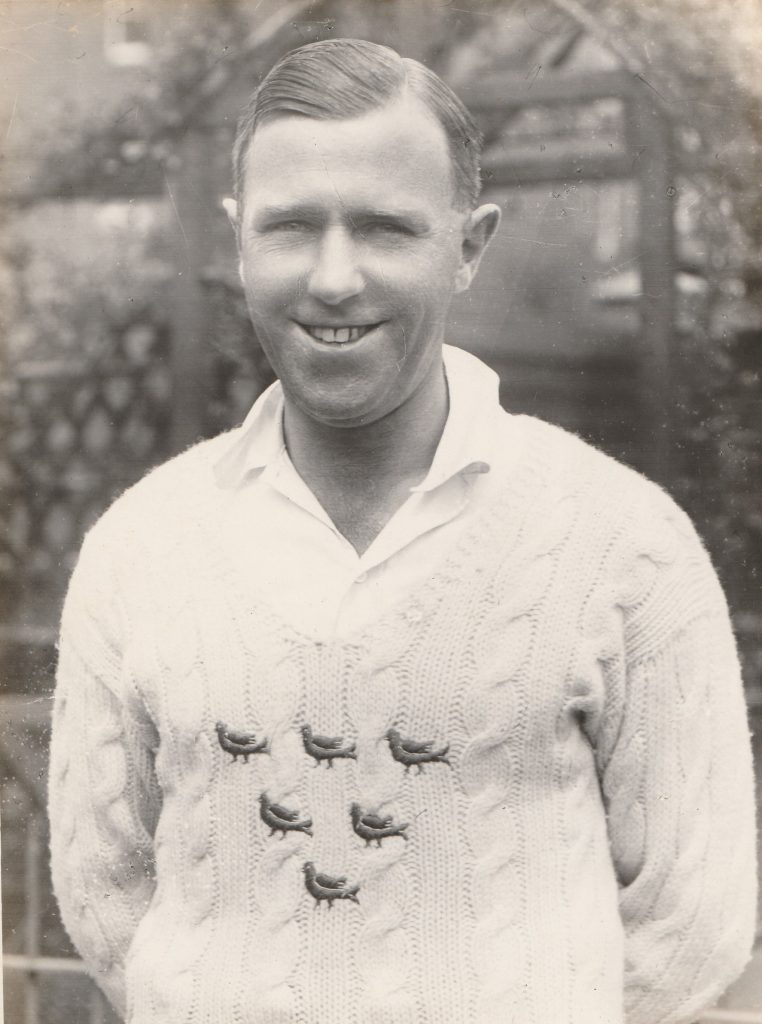
James Dean
James Dean, or Jemmy Dean as he is normally known, was a most unlikely looking cricketer, weighing 12 stone with a height of just 5ft 7in. He was rather portly and rustic looking and as he bowled seemed to roll from side to side yet he was skilful with both ball and bat. He played for Sussex for twenty five years, taking 491 wickets with his fast round arm bowling.
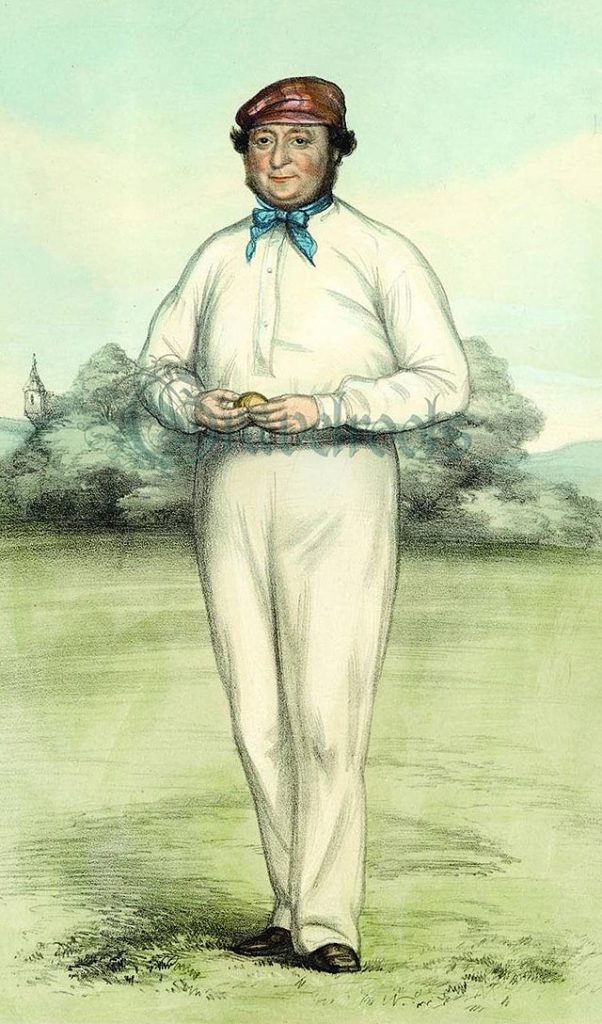
Ted Dexter
Ted Dexter was one of the most exciting cricketers who emerged in the Post War period. Like Ranji before him, the prospect of Dexter attacking fast bowling, and driving and cutting them with fierce strokes was enough to put thousands on any gate. He was a cricket thinker who helped to revolutionise the way the game was played and in so doing led Sussex to their first ever trophies in 1963 and 1964. Read On
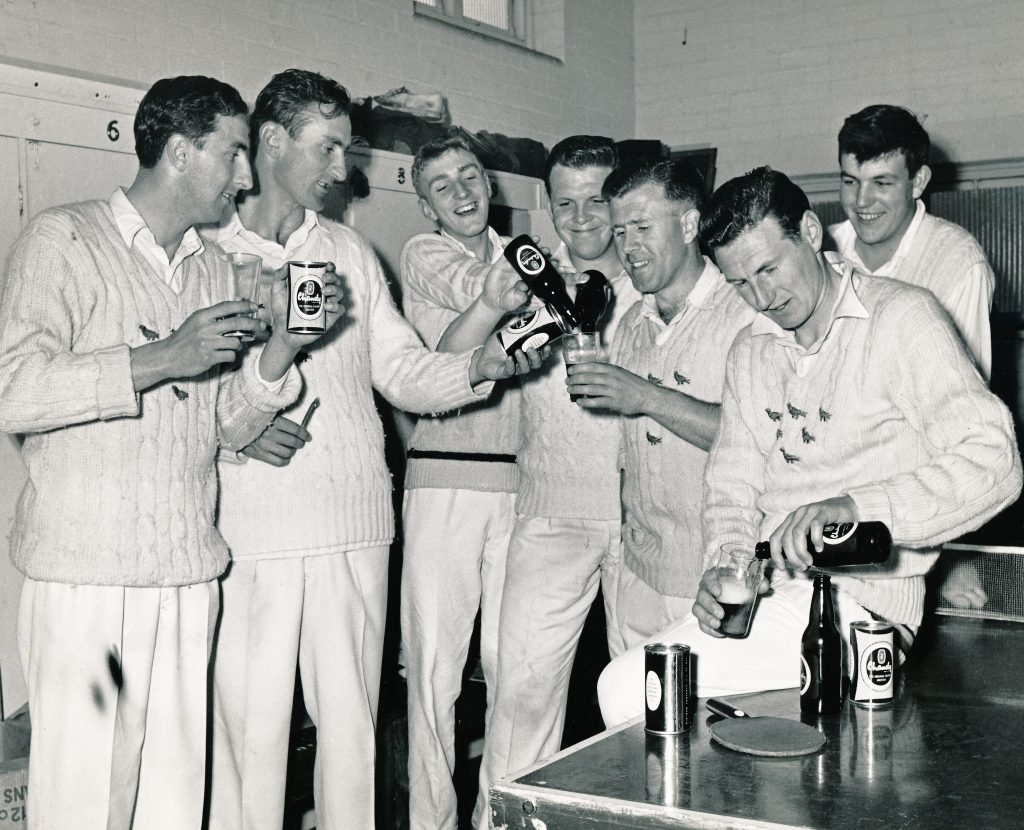
Hubert Doggart
Hubert Doggart was born in Earls Court London on 18 July, 1925. He was educated at Winchester College and then Cambridge University where he made his first class debut in 1948 at the age of twenty two – the same year as his debut for Sussex. He was a stylish right hand batsman who made a double century on debut for Cambridge, scoring 215 not out against Lancashire – the highest score by an Englishman on debut since 1826. In addition to his Blue for cricket at Cambridge, Doggart was awarded a Blue for football and a half Blue for three other sports. Read On
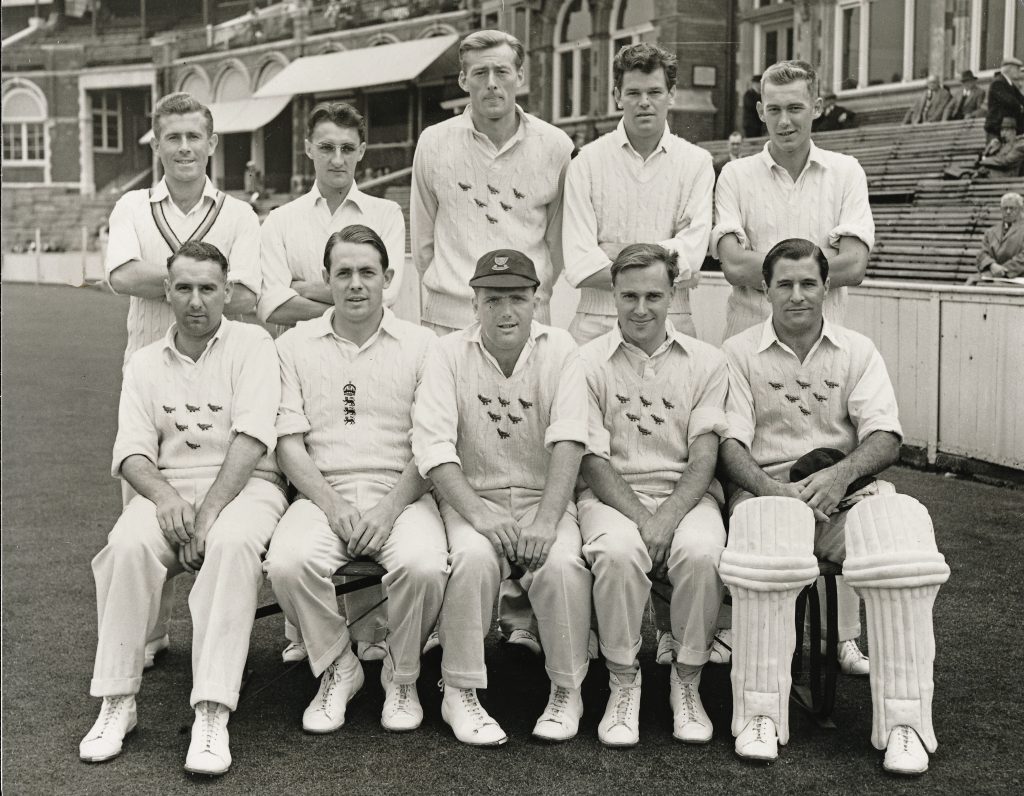
Kumar Shri Duleepsinhji
Kumar Shri Duleepsinhji (“Duleep”) , the nephew of Ranjitsinhji, was an exceptionally gifted Indian cricketer who played for Cambridge University, Sussex and England before India achieved Test status. Read On
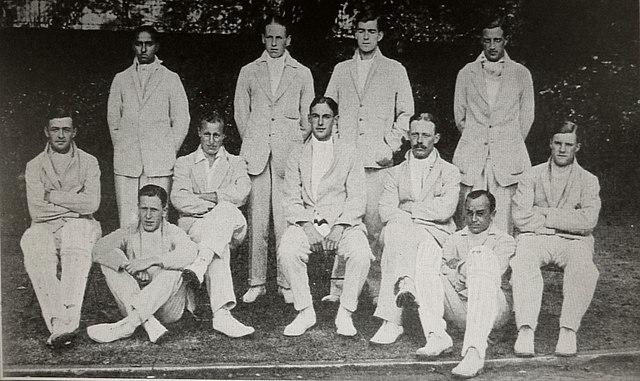
CB Fry
CB Fry is one of the legendary figures of English sport, and some would consider him the greatest English sportsman of all time. He was educated at Repton and Oxford and gained a university Blue in football, cricket and athletics and only missed out on a rugby Blue because of an injury. He was also an excellent scholar, having gained a senior scholarship to Wadham College and gained a First in Classical Moderations. Read On
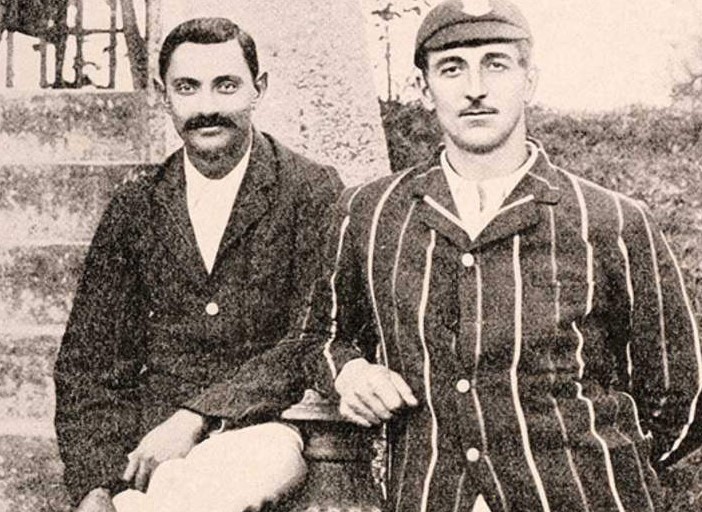
AER Gilligan
A.E.R. Gilligan was one of the Sussex greats. He captained Sussex for seven years between 1922 and 1929, was an excellent fast bowler and a quick scorer of runs lower down the order and a very good fielder, particularly at mid-off. With M. Tate the pair were the most lethal fast bowling partnership in England for a time in the 1920s and together they helped to restore Sussex’s fortunes. Gilligan also captained the England team nine times in 1924 and 1925 and also led a team to our India in 1926/27. As captain he got the best out of his players through leading by example and even at the end of the 1920s when his powers as a bowler were in decline he still managed to pull Sussex up the Championship table.
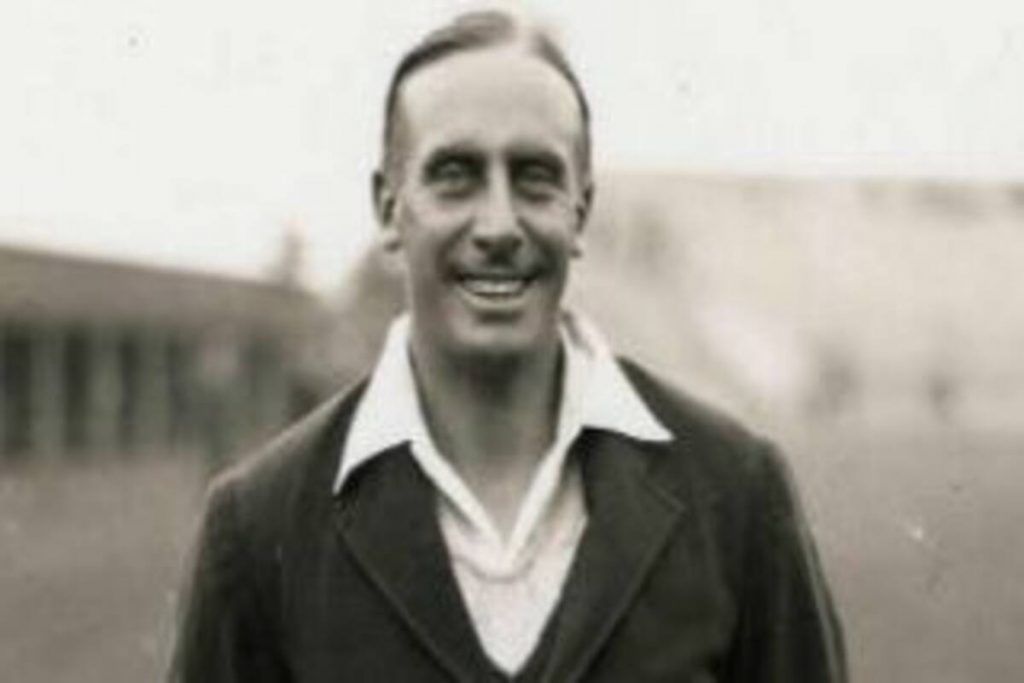
Murray Goodwin
Murray Goodwin was born in Harare, Zimbabwe, on 11 December 1972. His family emigrated to Australia when he was thirteen and he was considered good enough to attend the Australian Cricket Academy. He made his debut for Western Australia in 1994/95 but found it difficult to establish a place in the side’s strong batting line-up. He began to show better form in the 1996/97 season beginning with scores of 127 and 77 against Queensland and finished the season with an average above 61.Read On
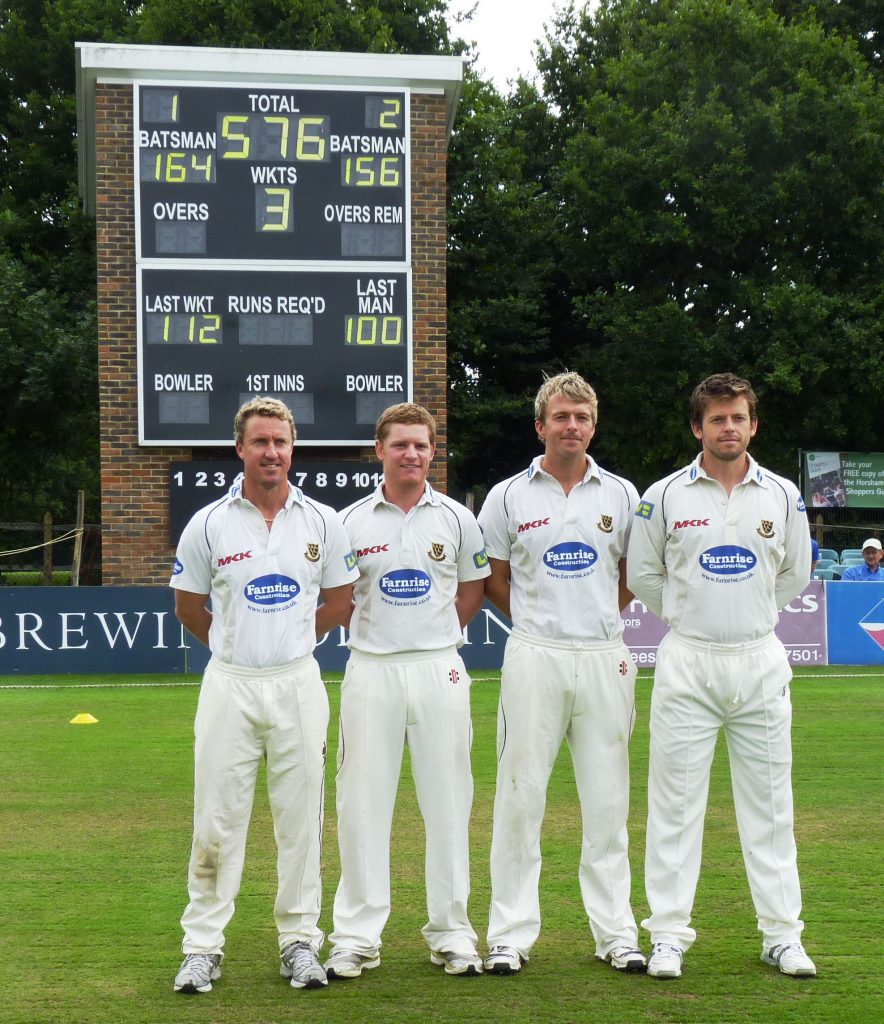
Ian Gould
Ian Gould, known as ‘Gunner’, was born in Slough on 19 August 1957. He played little cricket at school but was lucky enough to qualify for coaching at Lord’s through the Wrigley foundation where he was spotted by Middlesex whom he joined in 1972, at the age of 15 and played for the Lord’s team as a wicketkeeper and left-handed batsman between 1975 and 1980. He toured with England Young Cricketers in 1976 and was awarded his county cap in 1978. Read On
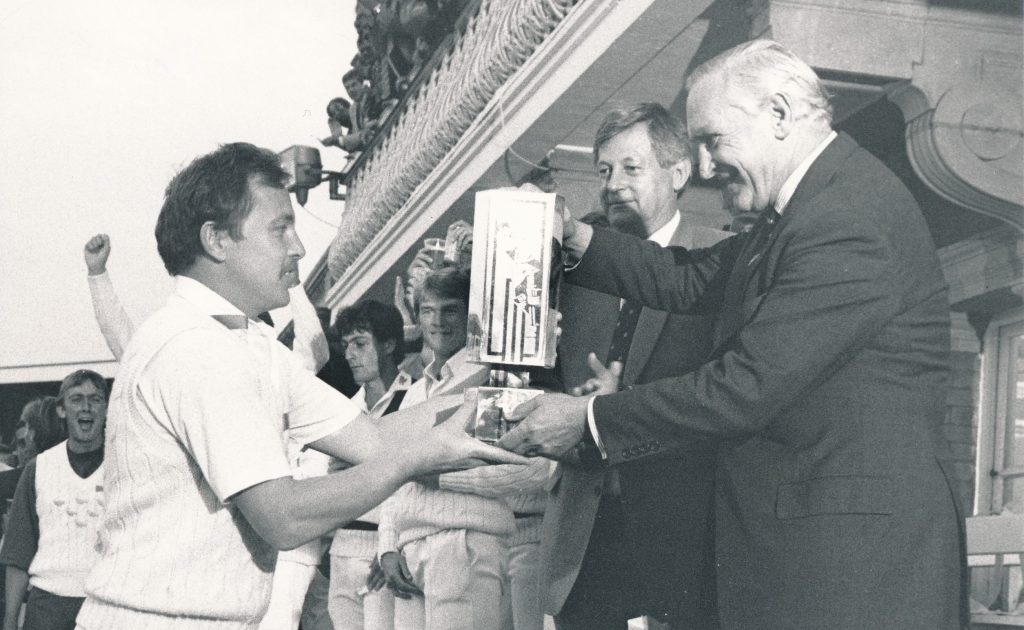
Tony Greig
Tony Greig was one of the most influential figures in English cricket in the 1970s although sadly his reputation has been largely destroyed by his involvement in the ‘Packer Affair’ in which he, together with Greg Chappell the former Australian Test captain, were seen as recruiting officers for Kerry Packer’s circus. Greig was though a vastly talented cricketer and from the moment he began playing for Sussex in May 1967, that was clearly apparent. Greig was captain of Sussex, and also of England from 1975 to 1977, playing for England by virtue of his father’s Scottish roots. His brother, Ian, also played for Sussex whilst several members of his extended family played at first-class level. Read On
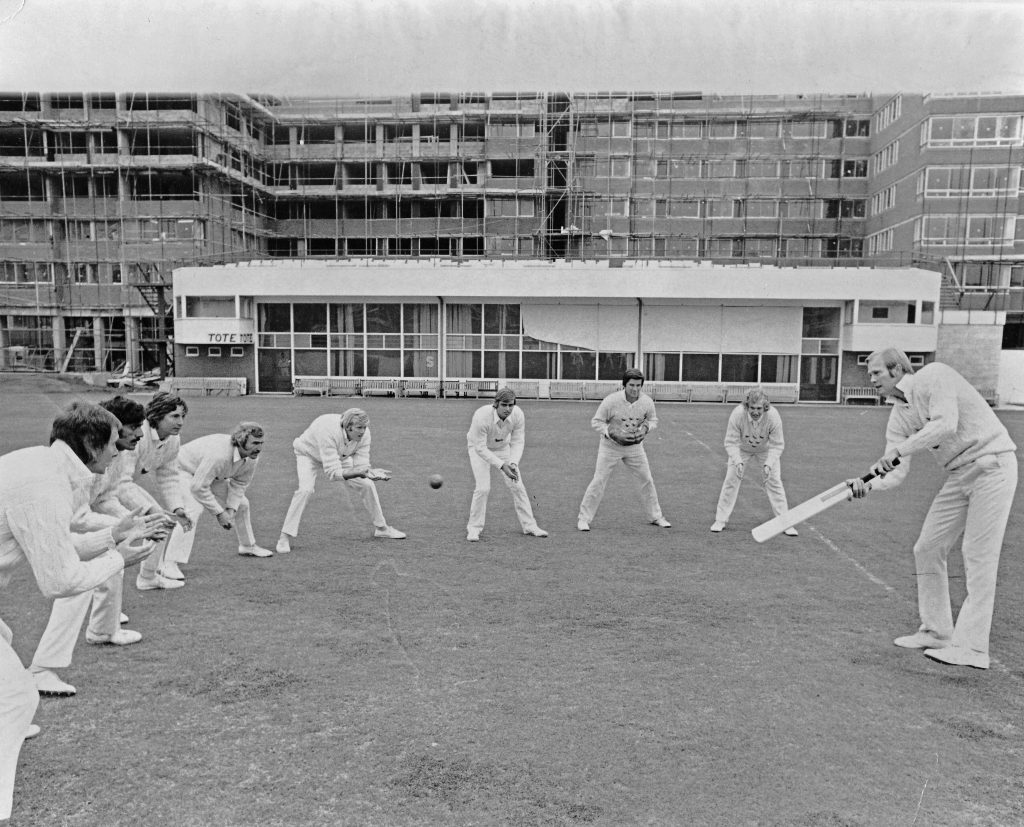
Imran Khan
Imran Kan Niazi was born in Lahore, Pakistan on 25 November 1952. He was to become one of the legendary right-arm all-rounders in recent cricket history, let alone for Sussex for whom he first played in 1977.
Khan was educated at Aitchison College, Lahore and Worcester Royal Grammar School before going up to Oxford University where he was captain in 1974 and won three Blues. Khan began his English cricketing career in 1971 when he was eighteen, joining Worcestershire, and played for Pakistan the same year. Khan was capped by Worcester in 1976 but despite the cap, he left New Road and joined Sussex in 1977.
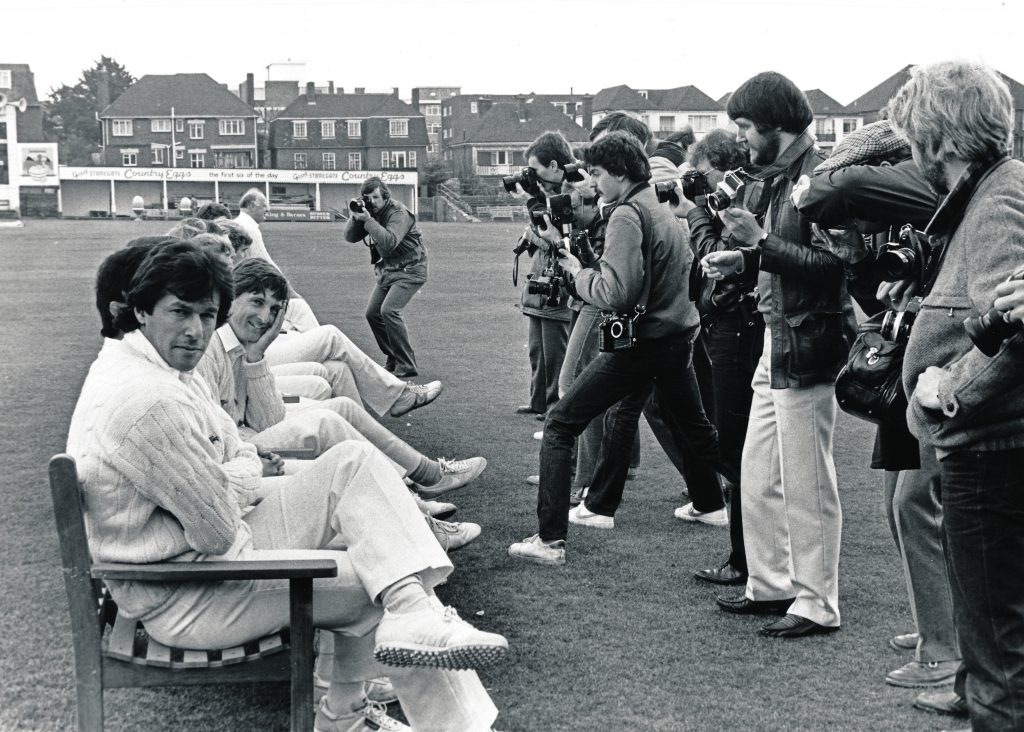
Revd. Langdon and George Taylor
The Revd Langdon was instrumental in the setting up of Sussex Cricket Club whilst George Taylor played in early Sussex sides scoring the first century for the Sussex team. Read On
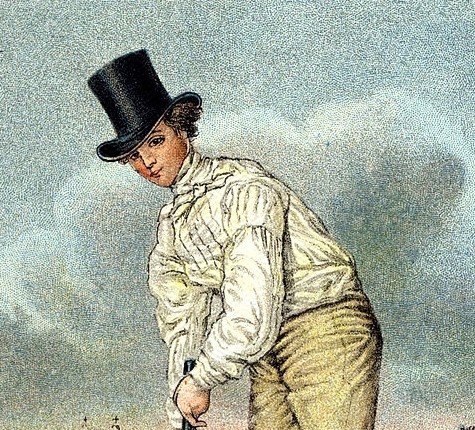
James Langridge
James Langridge, who was always known as Jim to distinguish him from his younger brother, John, was a great servant to Sussex cricket, playing for the county for almost thirty years from 1924 until 1953. Jim was a middle-order left handed batsman and a slow left-arm spin bowler. He played just eight Test matches for England, as he had the misfortune to be an exact contemporary of the great Yorkshire slow left-arm bowler, Hedley Verity. Read On
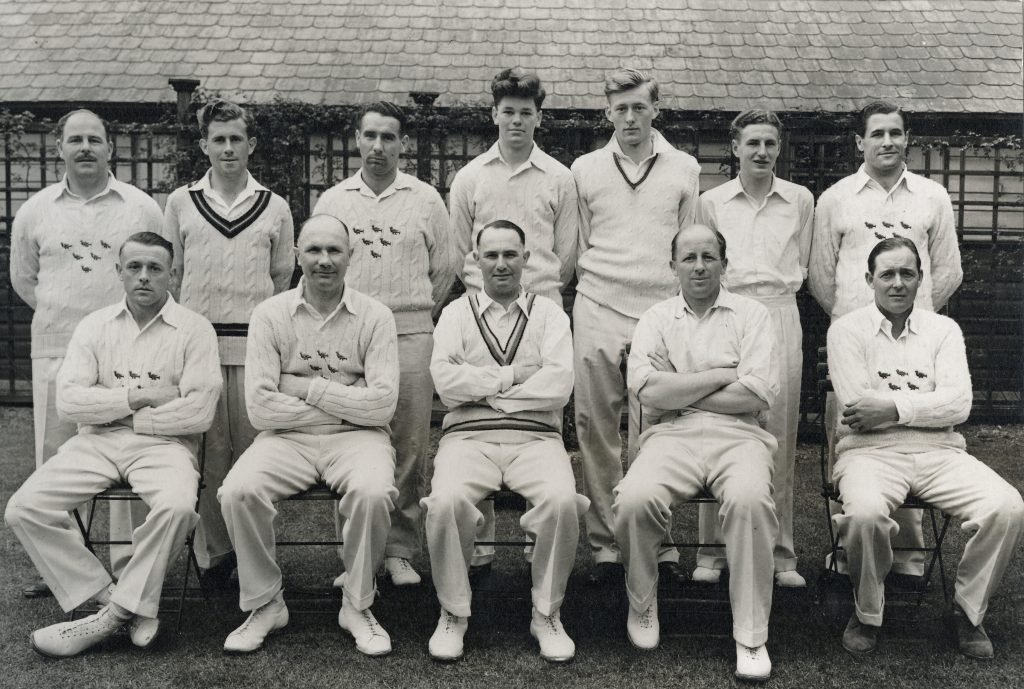
John Langridge
John Langridge was one of the best cricketers of the 20th century not to have played in a Test match. John was the younger brother of Jim, and the pair grew up in the Sussex Weald, playing cricket for their local school and club, before they joined Sussex.
John was born in Chailey on 10 February, 1910 and after a youth of playing cricket with his father and brother, joined Sussex in 1928 for whom he played as a batsman until 1955. He came into contention for an England place just as war broke out and the India tour, for which he had been selected, was cancelled.
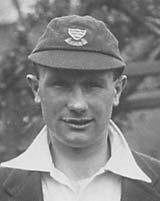
Neil Lenham
Neil Lenham had an excellent coach in his father and his technique as an opening batsman was exemplary. He made his debut for Sussex in 1984 against Sri Lanka at Hove but struggled to make a real breakthrough in his early years for Sussex although he did score a maiden century against the 1987 Pakistani team which included Imran Khan and Wasim Akram. Read On
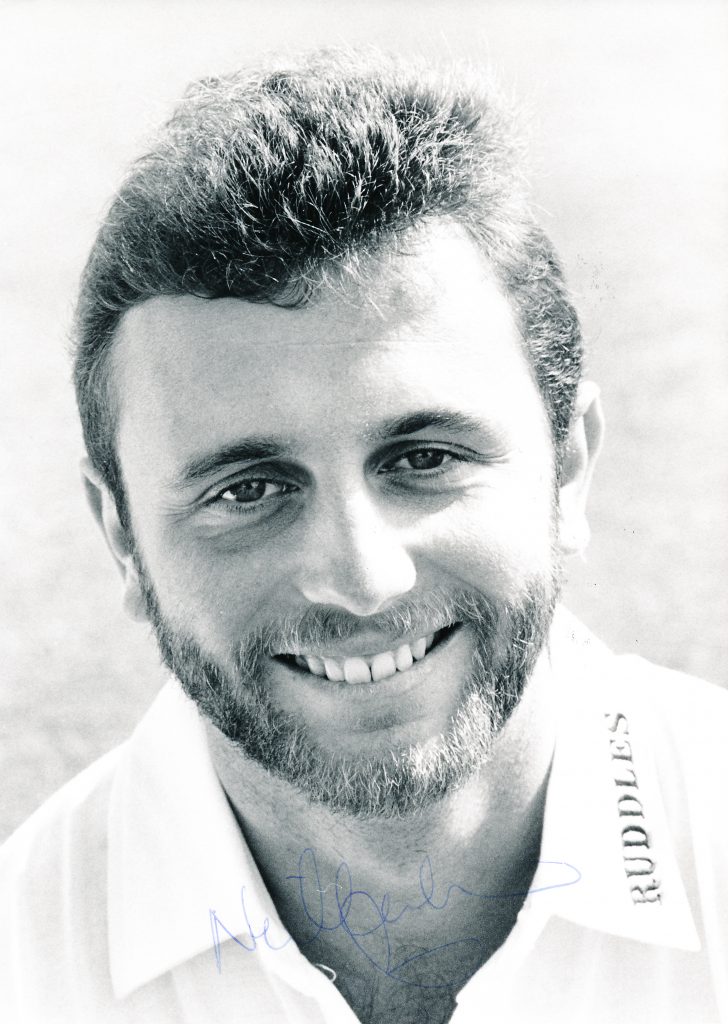
Jason Lewry
In sultry conditions there was no-one to match Jason Lewry, and with the late swing he got with the new ball, he often took the wickets of the opening batsmen in the first few overs to give Sussex an excellent psychological advantage. He can consider himself unlucky not to have played for England but as he said “If I had been good enough I would have played. I felt I had the ability but I would never have been strong enough to cope with the pressure of stepping up to the next level Read On
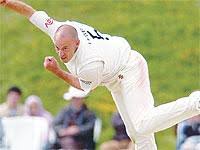
The Lillywhite Family
Five members of the Lillywhite family played for Sussex over a period of sixty years. The first member, Frederick William Lillywhite, ‘Old Lilly’ known as the ‘Sussex non-pareil bowler’ was born in 1792 and played for various teams in Sussex before the formation of the county club in 1839. He was only 5ft 4ins tall and a round arm bowler of great accuracy. He began life as a bricklayer and came to Brighton to take charge of a brickfield. Read On
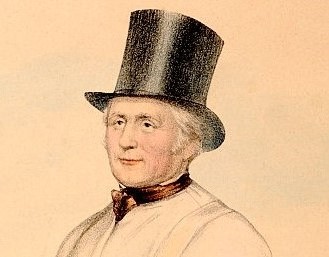
Arnold Long
Arnold Long was born on 18 December 1940 in Cheam, Surrey. He attended Wallington Grammar School before leaving at eighteen to join Surrey becoming their regular wicket keeper in 1962. Two years later he set a new world record, equalled by five other ‘keepers, of catching 11 batsmen in the match against Sussex at Hove. Long was a member of the Surrey team that won the County Championship in 1971. His leadership qualities were recognised by Surrey when Long became vice-captain in 1973. Read On
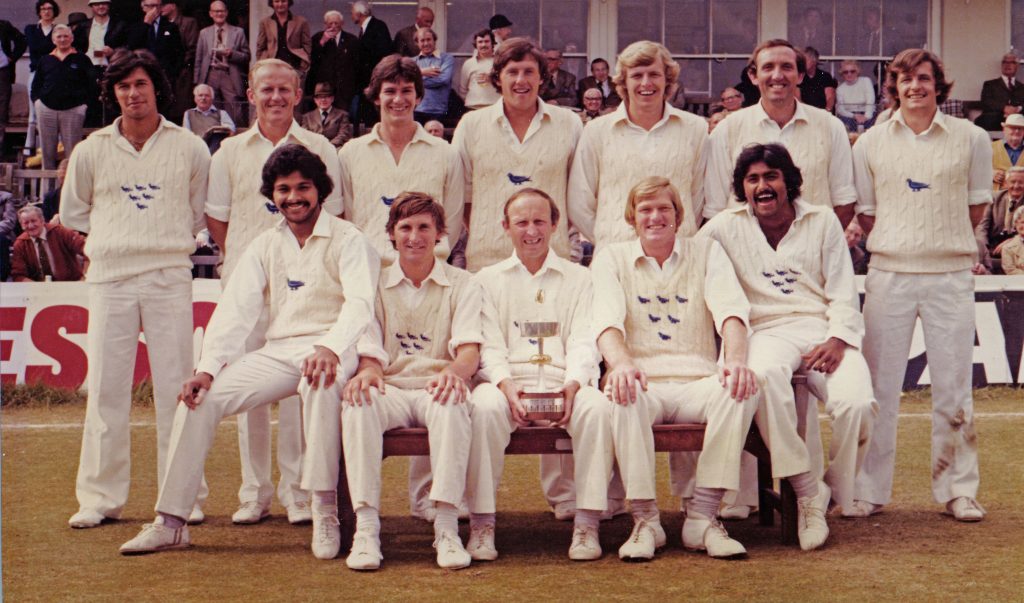
Keith Miller
In a summer when we welcome Steve Smith to Sussex, it is interesting to recall another great Australian cricketer who played for the county, albeit rather briefly.
When World War Two broke out in September 1939, Championship cricket was understandably suspended but unlike the situation in World War One, there was still some cricket of a high standard played between teams that were often cobbled together based on who was home on leave and /or where in the UK they were stationed. Read On
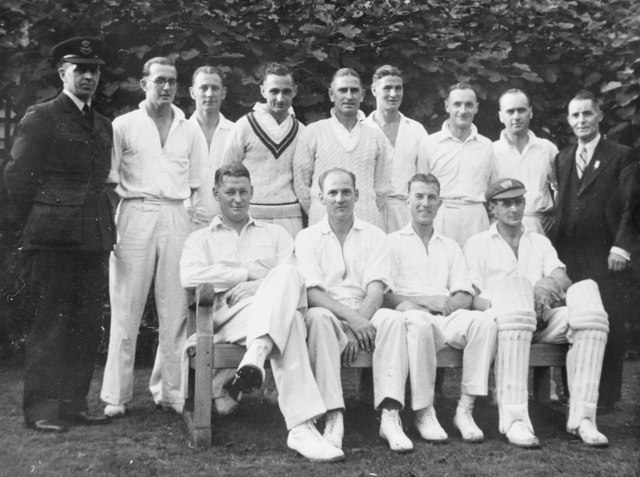
Leonidas de Tolhedo Marcondes de Montezuma
This gentleman with such a wonderfully sounding name played eight games, as a right hand bat, for Sussex as an amateur in 1898. He also played once against Gloucestershire for the short-lived London County team run by W. G. Grace. In total he scored 271 runs for Sussex with a top score of 80 against a good Nottinghamshire attack. Read On
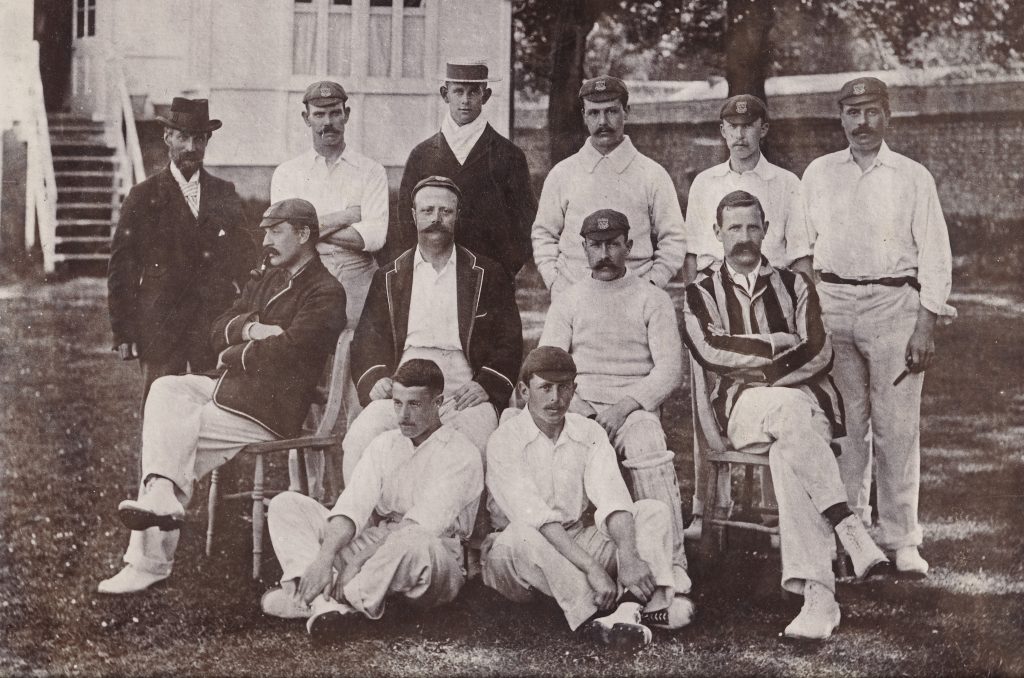
Mushtaq Ahmed
Mushtaq was a chubby leg spinner who could produce a full range of leg-spin variations. He was a match-winner who was considered to be not far behind his contemporary Shane Warne. He got less bounce than Warne and couldn’t get the in-drift that Warne got but in every other respect was the equal of Warne. During his time with Sussex, he was the leading wicket-taker in the County Championship for five successive seasons, helping the county win the competition not just in 2003 but also in 2006 and 2007. Read On
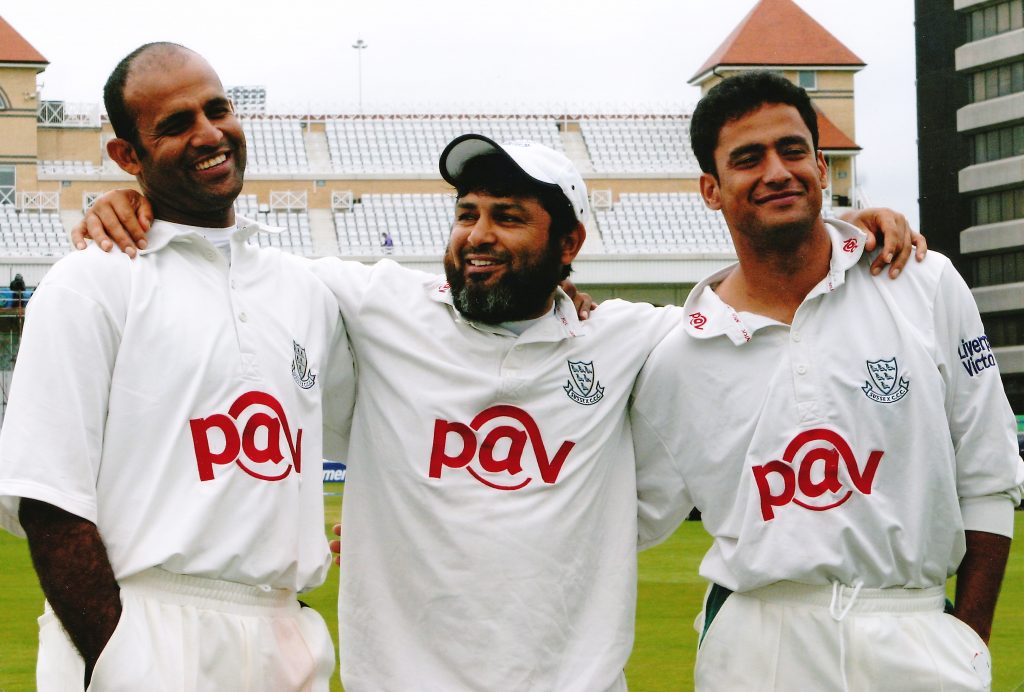
Jim Parks, senior
Jim Parks senior will always be remembered for what may become a unique achievement, scoring over 3,000 runs and taking over 100 wickets in one season. In 1937 Parks scored 3003 runs at an average of 50.89 and took 101 wickets at 25.83 each. His son, ‘Young’ Jim remarked that this achievement may have been a reaction to a family bereavement, for his wife had died the previous season and Parks may just have thrown himself in to his cricket as a way of giving himself something else to focus on.
In his record breaking season, Parks was called up to the England side for the first time in the First Test at Lords that summer against New Zealand. He opened the batting with Len Hutton, who was also making his debut, and scored 27 and 7. He also took three wickets for 16, and was then dropped.
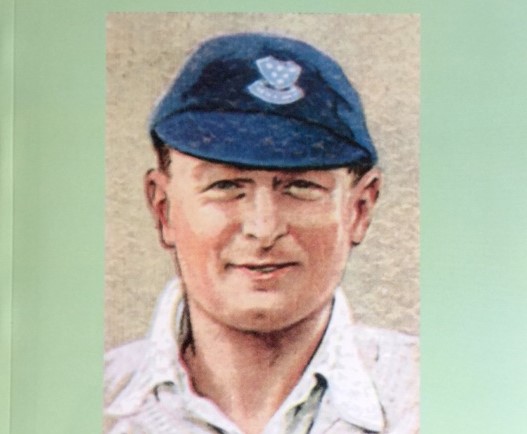
Jim Parks, junior
James Michael Parks was the most successful member of a family that had connections with Sussex from 1924 until 1972 and together produced more than 70,000 runs for the County. He was born in Haywards Heath (like his father) in 1931, and like his father before him, Young Jim was an excellent schoolboy cricketer, playing for Hove County School before being signed up by Sussex at the age of 17. Read On
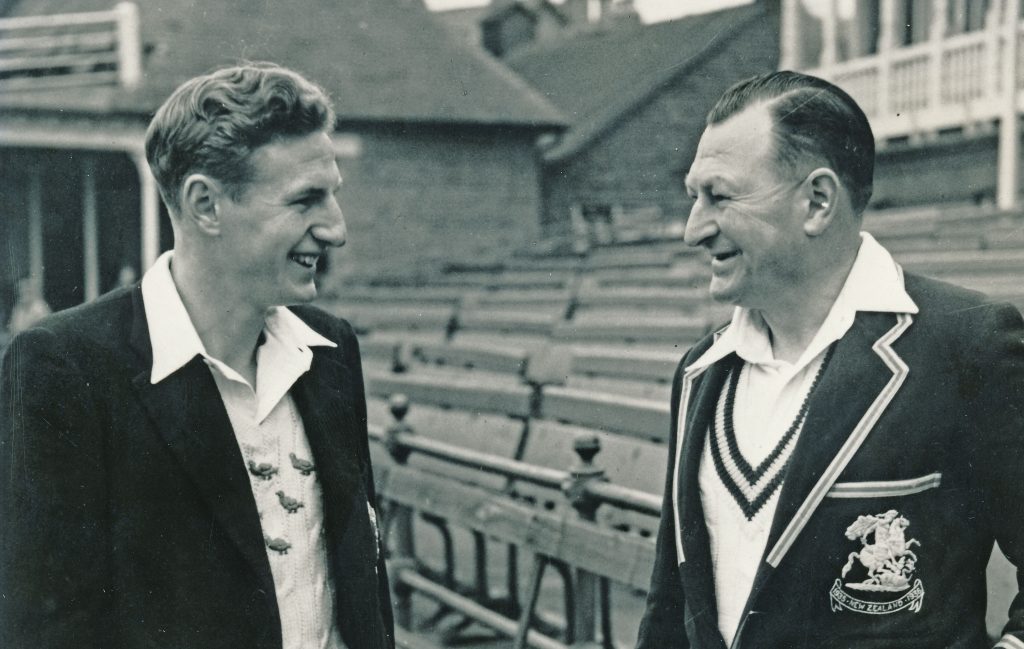
The Nawab of Pataudi
Following on from Ranji and Duleep, Mansur Ali Khan was the third member of Indian royalty to captain Sussex. He was born in Bhopal in 1941 and became the Nawab of Pataudi in 1952 following the death of his father, also a noted cricketer. By then, the title was largely honorific although with some privileges which had been retained under a deal struck with the British upon the creation of the independent Indian state. He was generally called by the nickname Tiger Pataudi. Read On
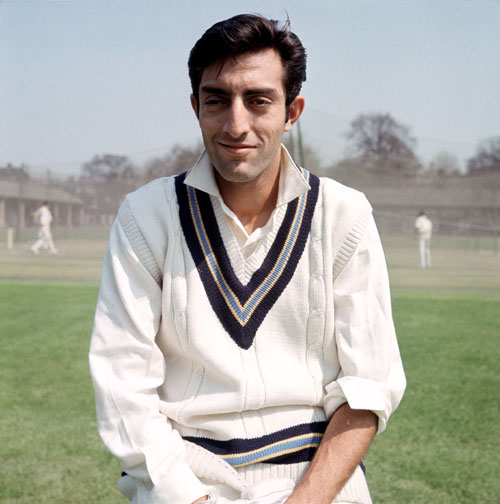
Kumar Shri Ranjitsinhji
Within a year of making his debut for Sussex in 1895, Ranji was a huge celebrity, not just in the world of cricket but in the world of sport generally. He had an instant impact on the batting of Sussex and was soon attracting large crowds wherever he played, for the runs he scored but also the style in which he made his runs. Read On
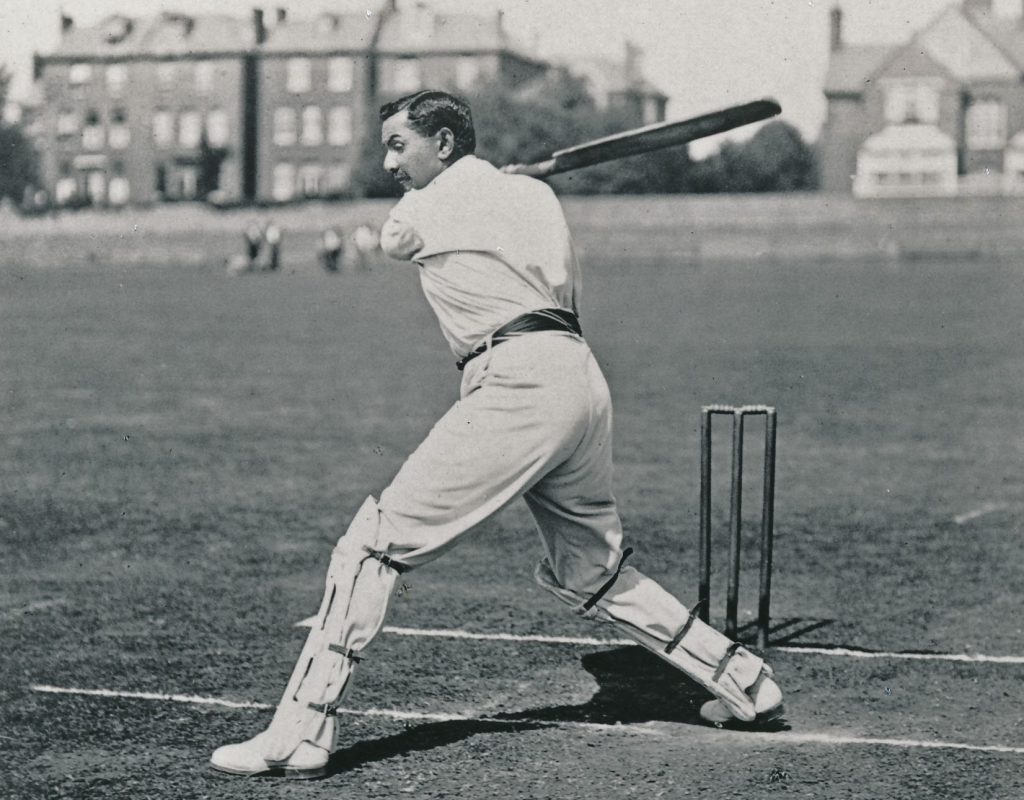
AE Relf
Albert joined Sussex in 1900 to start a career of twenty-one years, punctuated by the First World War, in which he distinguished himself, being awarded the Meritorious Service Medal. While with Sussex, A E played in 448 matches and scored 18,133 runs. He took 1897 wickets at an average of 20.94 and to top that off, he was an outstanding slip fielder taking 409 catches.
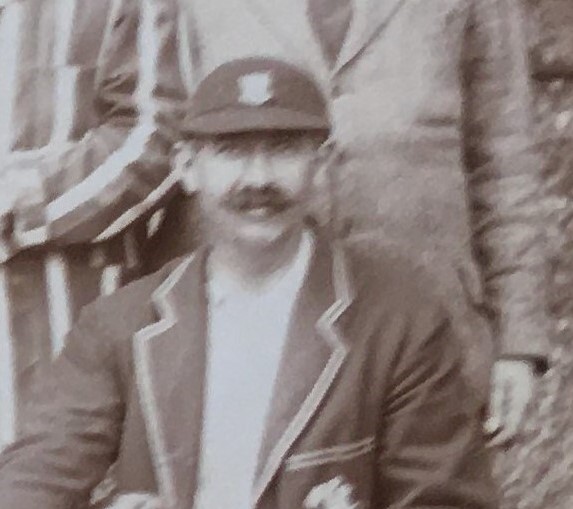
Derek Semmence
Derek Semmence was a right-handed batsman who bowled right arm medium pace. He played for Sussex between 1956 and 1959 before returning to Sussex in 1967. After his career in First Class cricket was over, Derek continued to be involved in cricket at youth level, becoming an excellent coach at Hurstpierpoint College. Read On
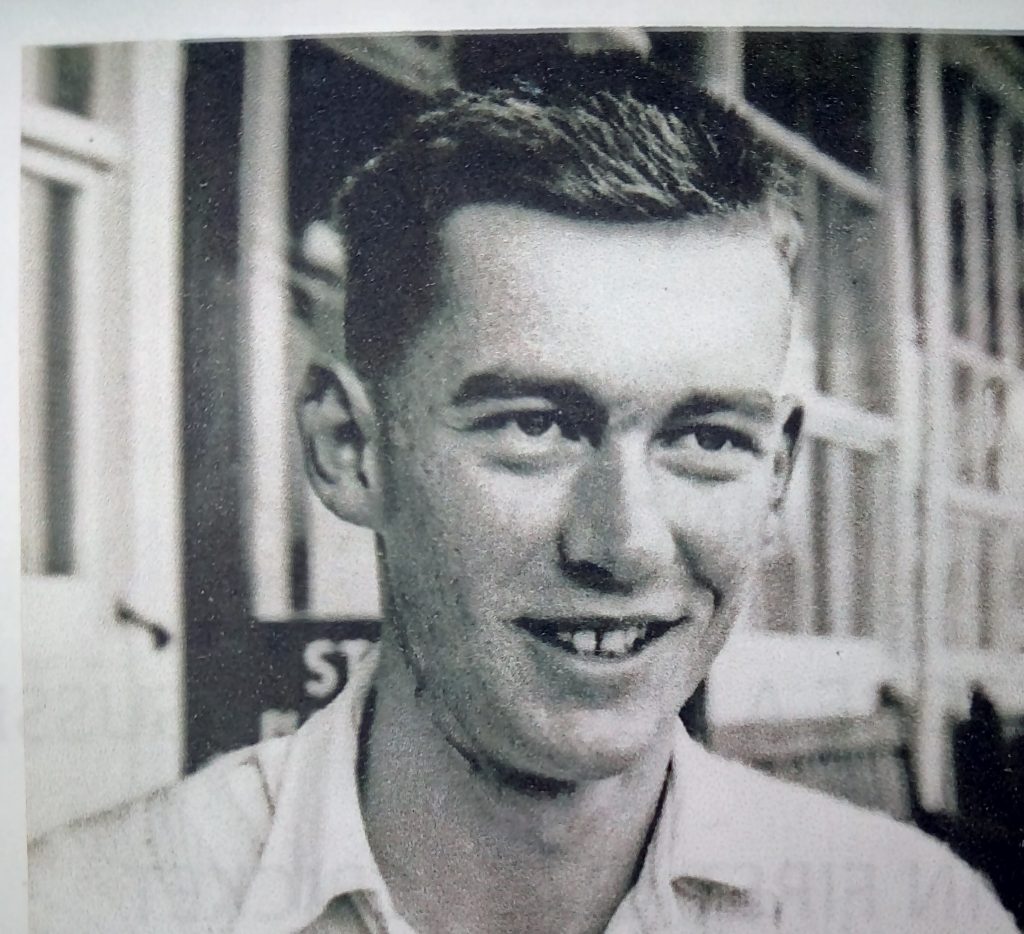
David Sheppard
David Sheppard was born in Reigate on 6 March 1929, Surrey to Stuart Sheppard and Barbara Shepperd. Following the death of his father in the late 1930s the family moved to Sussex. He might have been one of the all time batting greats of the post-war era but his time in cricket was short for he became a bishop, a member of the House of Lords and a campaigner for the underprivileged. During his short cricketing career though he had a good Test career and was an inspiring county captain. Read On
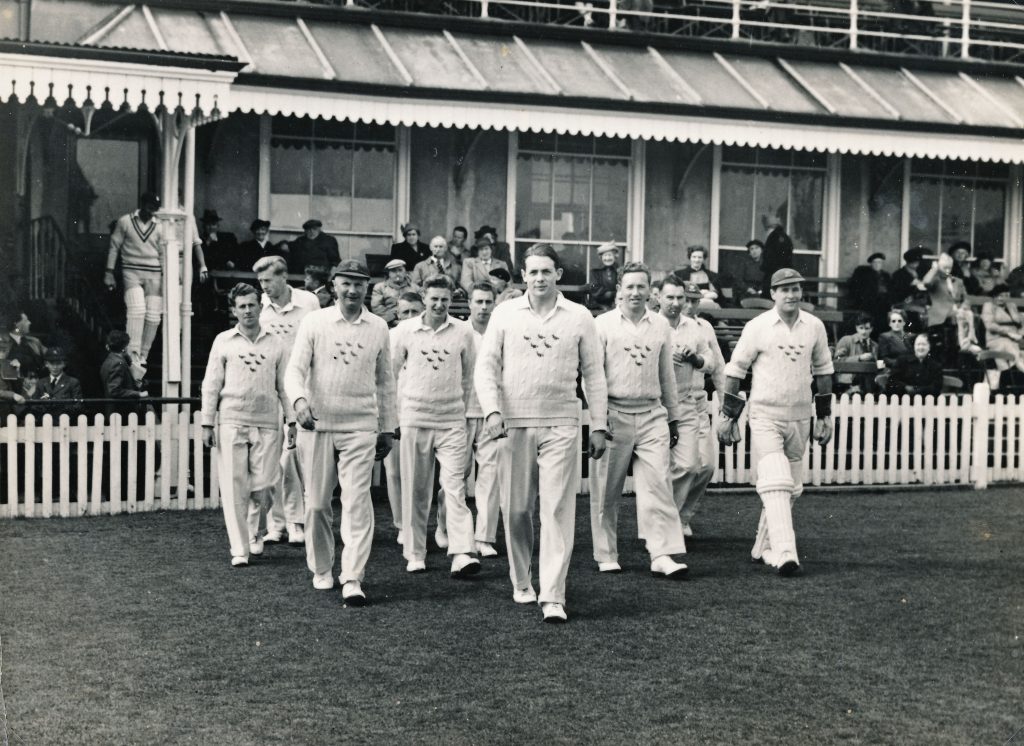
Sir Aubrey Smith
Sir C Aubrey Smith is perhaps best remembered as a film star playing the typical English gentleman but in his earlier days he was captain of the Sussex County Cricket Club team and for one match the captain of England, on his England debut. Smith was a tall fast-medium bowler with a particularly high action. He could also bowl a useful leg-cutter. The most interesting aspect of his play though was his curved run-up to the wicket to the wicket that earned him the nickname ‘Round the Corner’. Read On
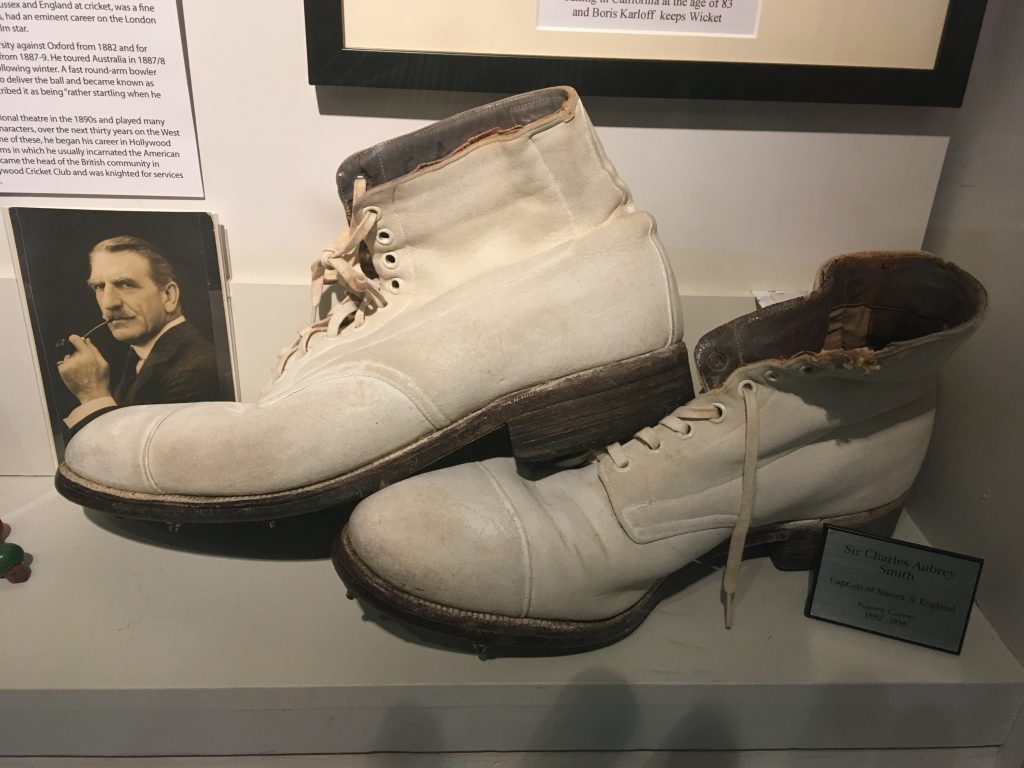
Don Smith
Don Smith was born in Broadwater, Worthing on 14 June 1923 and until his death on 10 January 2021 was England’s oldest living Test cricketer. He was a left-hand opening batsman, a left-arm medium pace bowler and was the first player from Worthing to win an England cap. He first played for Sussex in 1946 and in his first three seasons produced nothing remarkable but in 1949 he-began to open with John Langridge, becoming a full-time opener. Read On
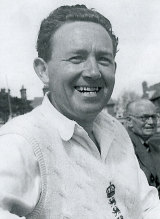
John Snow
John Snow is regarded as one of England’s finest fast bowlers of the post war period, being England’s finest bowler between the eras of Trueman and Willis. He could be an ‘enfant terrible’ at times and the despair of some captains. On his day he was as hostile as any fast bowler and a match winner. Read On
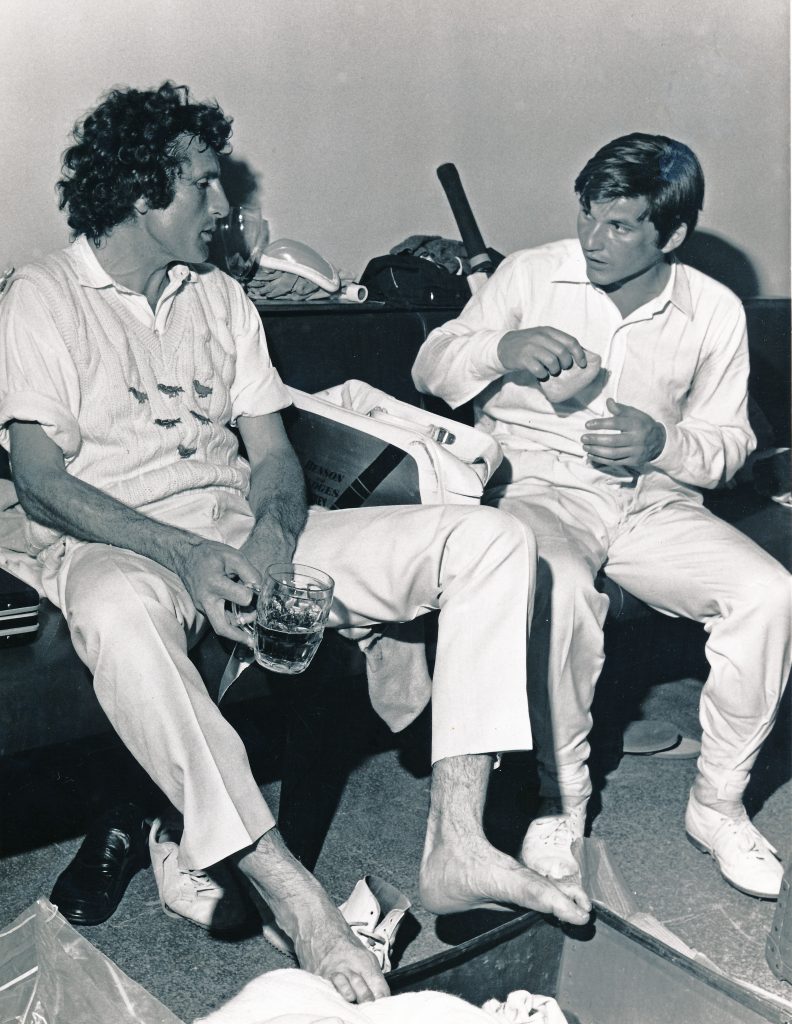
Ken Suttle
Ken Suttle was an all-rounder who spent years serving his county without ever reaching the very highest level in cricket. He was selected to go on a tour of the West Indies but never got to play in a Test match and stands equal third with Les Berry in the list of players with most first-class runs not to have played a Test. During his career with Sussex Suttle played 423 consecutive Championship matches (August 1954-June 1969), still a world record and unlikely to be beaten. He achieved this feat whilst playing during an era when Sussex readily left out proven professionals in order to accommodate the sometimes brilliant amateurs such as David Sheppard, Hubert Doggart and the Nawab of Pataudi. Read On
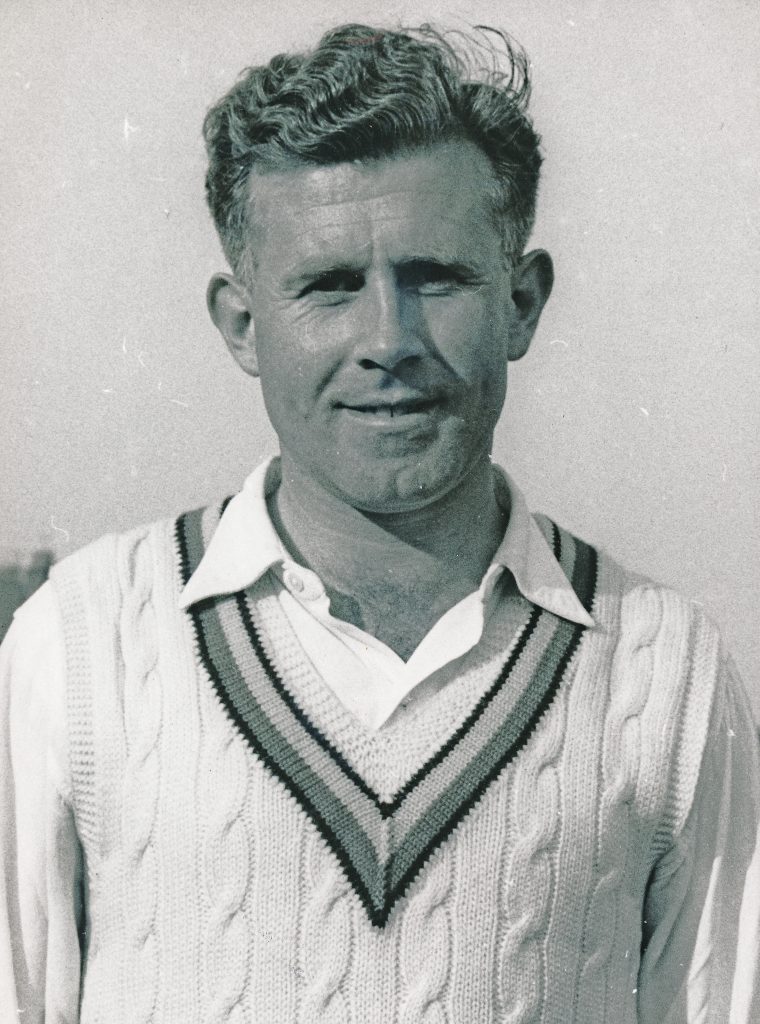
Fred Tate
Tate, nicknamed ‘Chub’ or ‘Chubby’ by his peers, was one of the first in a line of great Sussex spin bowlers who could be relied on to hold down one end of the wicket for hours at a time, keeping the pressure on and economy low while his quicker teammates did their work. Bowling long spells without loss of accuracy or fatigue, Tate was able to strangle the firepower out of even the finest batters that this era could offer. Read On
Maurice Tate
Maurice Tate had a range of qualities: to some, he is Sussex’s greatest all-rounder, an incredibly rounded player who dominated with bat and ball in most games in which he played. To others, he is the greatest bowler the club has ever produced, achieving 2,211 career wickets for the club at an average of only 17.41.Read On
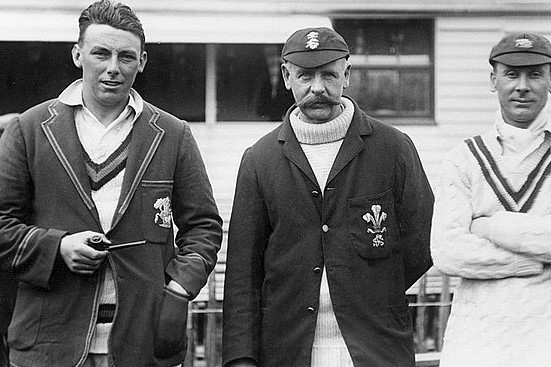
A Trio of Champions
These three men from Punjab on the Trent Bridge outfield have the broad smiles of a group that know they are about to achieve a truly remarkable feat, yet they are faing their last day together playing for Sussex. They are Rana Naved-ul-Hasan, Yasir Arafat, and Mushtaq Ahmed. Read On
Ian Thomson
Ian Thomson was a quite remarkable bowler: sturdy, good-humoured, seemingly tireless. He appeared to be able to bowl all day long, and ait was as if he had been bowling from the dawn of time. Of all Sussex’s medium paced bowlers, only Maurice Tate can compare with him. Being able to bowl all day and every day, he was a captain’s delight and he played for Sussex from 1952 until, 1972, twenty years of good service to what became his home club. Read On
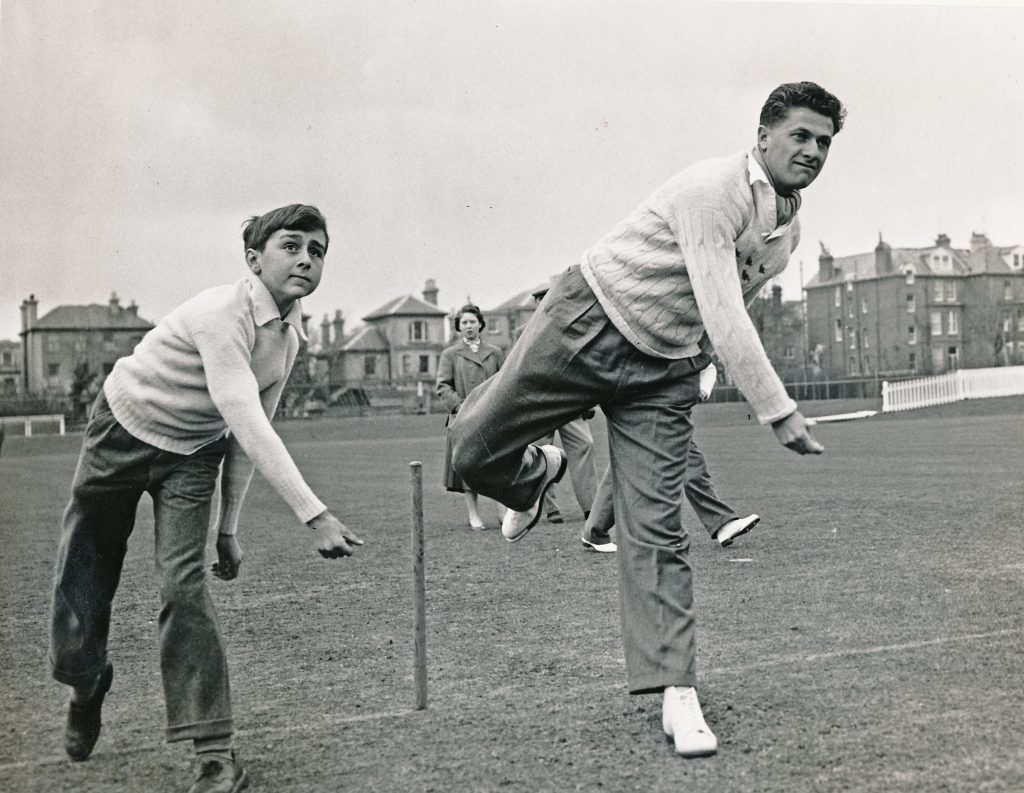
Joe Vine
Joe Vine was Sussex’s leading professional player during the Golden Era of Raj and Fry. He was in their shadow in the early years of his Sussex career but contributed to some wonderful opening partnerships with C.B. Fry. Once Ranji and Fry had moved on from Sussex, Vine established himself as Sussex’s leading batsman.
Vine was born in Willingdon in 1875 and played his first game for Sussex in 1896, a year after Ranji’s debut for the club. At that time Vine’s main contribution to the side was his outstanding fielding. His opportunities were limited because of the depth of Sussex batting, with not just Ranji and Fry but Brann, Newham and Murdoch. Vine did though score 115 not out against Hampshire at Hove, his maiden century in 1899, and his career rapidly developed from then.
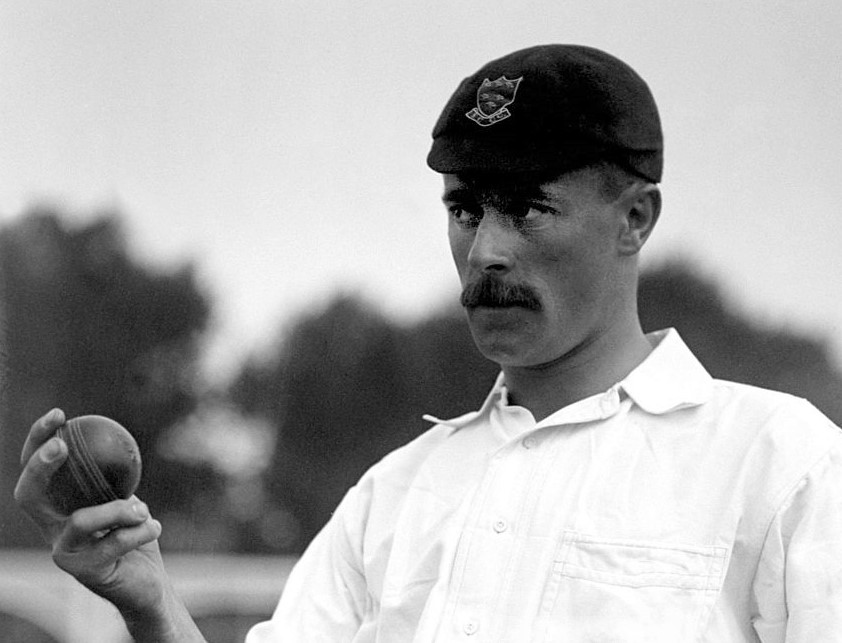
Alan Wells
Alan Wells was born in Newhaven on 2 October 1961 and went on to become one of the best middle order batsmen Sussex have had in recent years, and in his prime in the seven years between 1989 and 1995 there were few better batsmen in England yet he won just one Test cap. In these seven years Wells made 10,157 runs at an average of 48.6 for Sussex and scored 30 hundreds but was selected for just two England ‘A’ tours, one limited overs international and the one Test. Read On
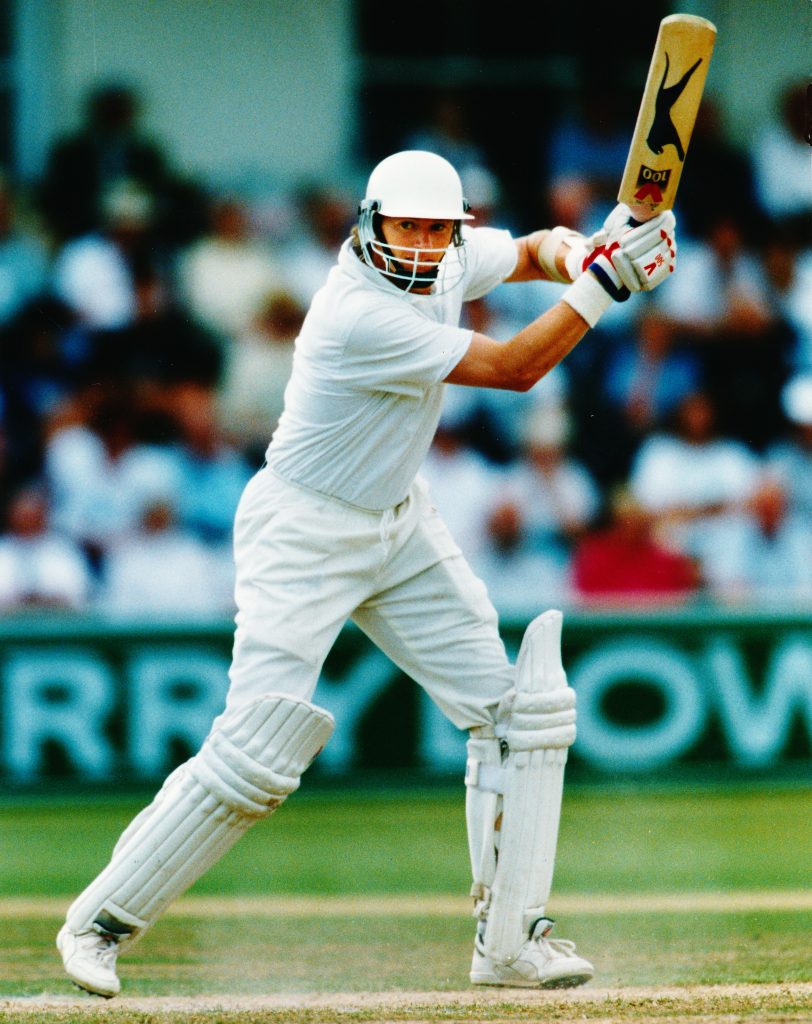
John Wisden
John Wisden was described in the obituary which appeared in the 1885 edition of his almanack as a ‘splendid all-round cricketer in his day: a good bat a fine fielder and as a bowler unsurpassed. A quiet, unassuming and thoroughly upright man. A fast friend and a generous employer.’ John was born at the family home in Hampden Place, Brighton on 5 September. Read On
